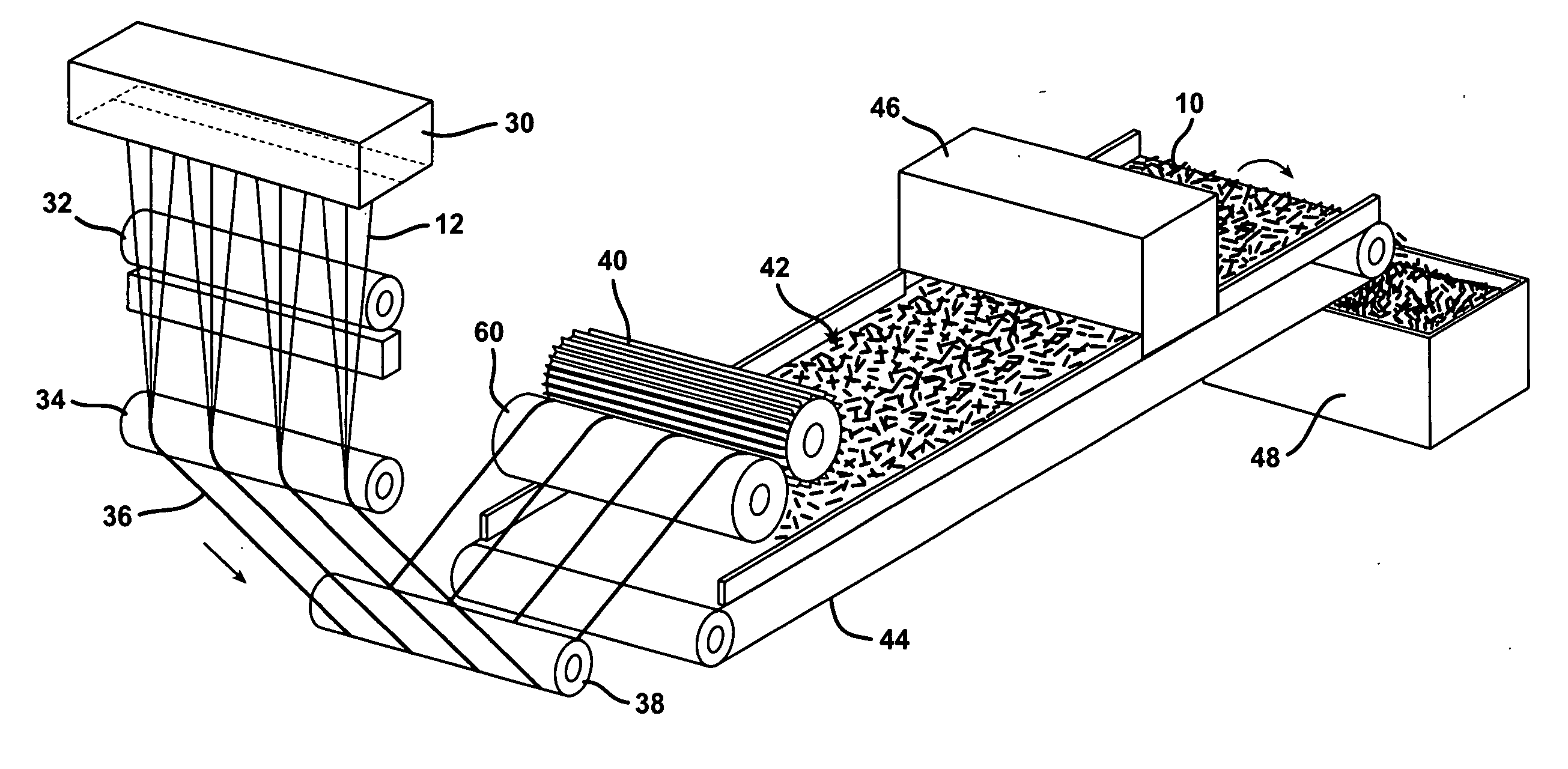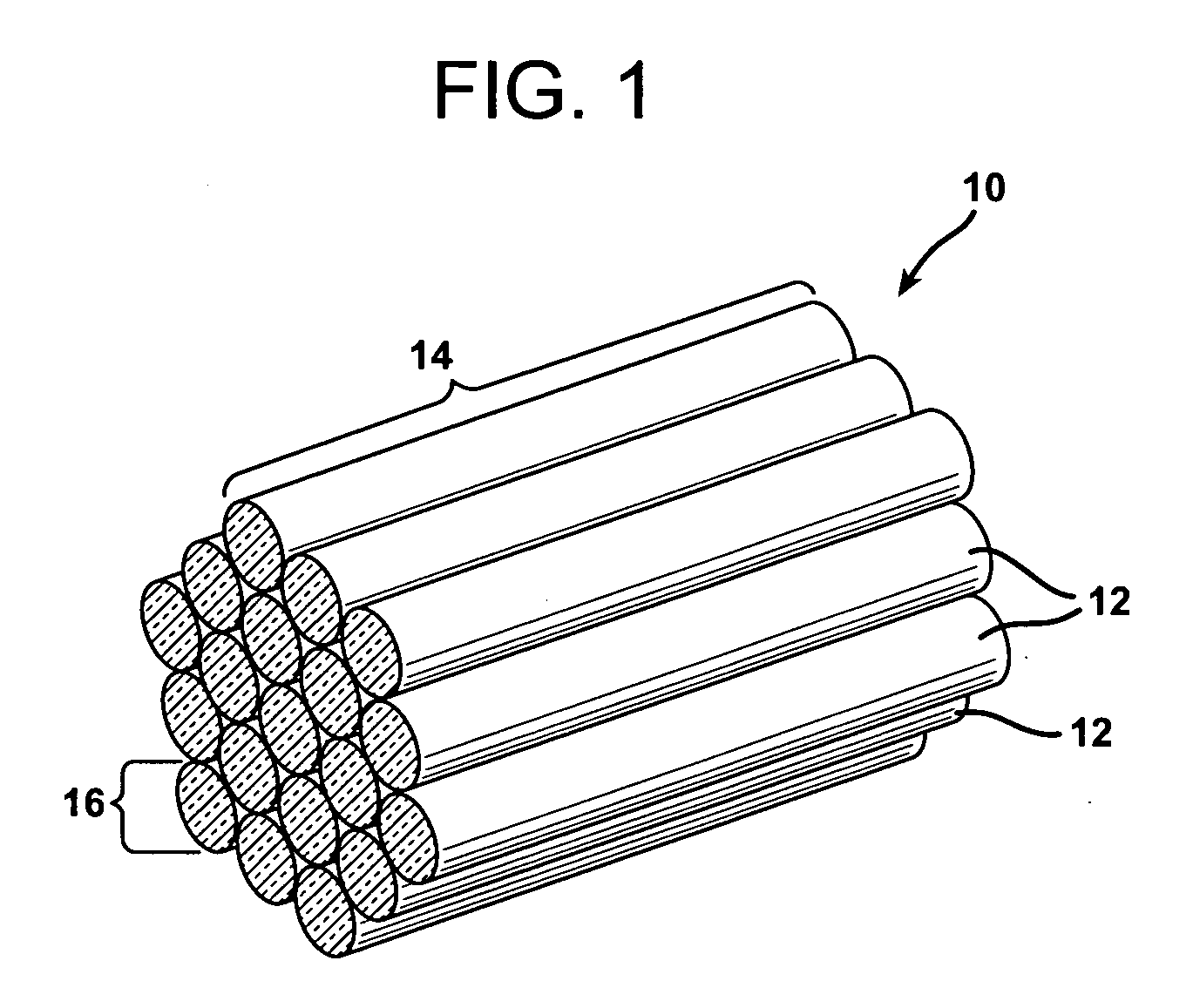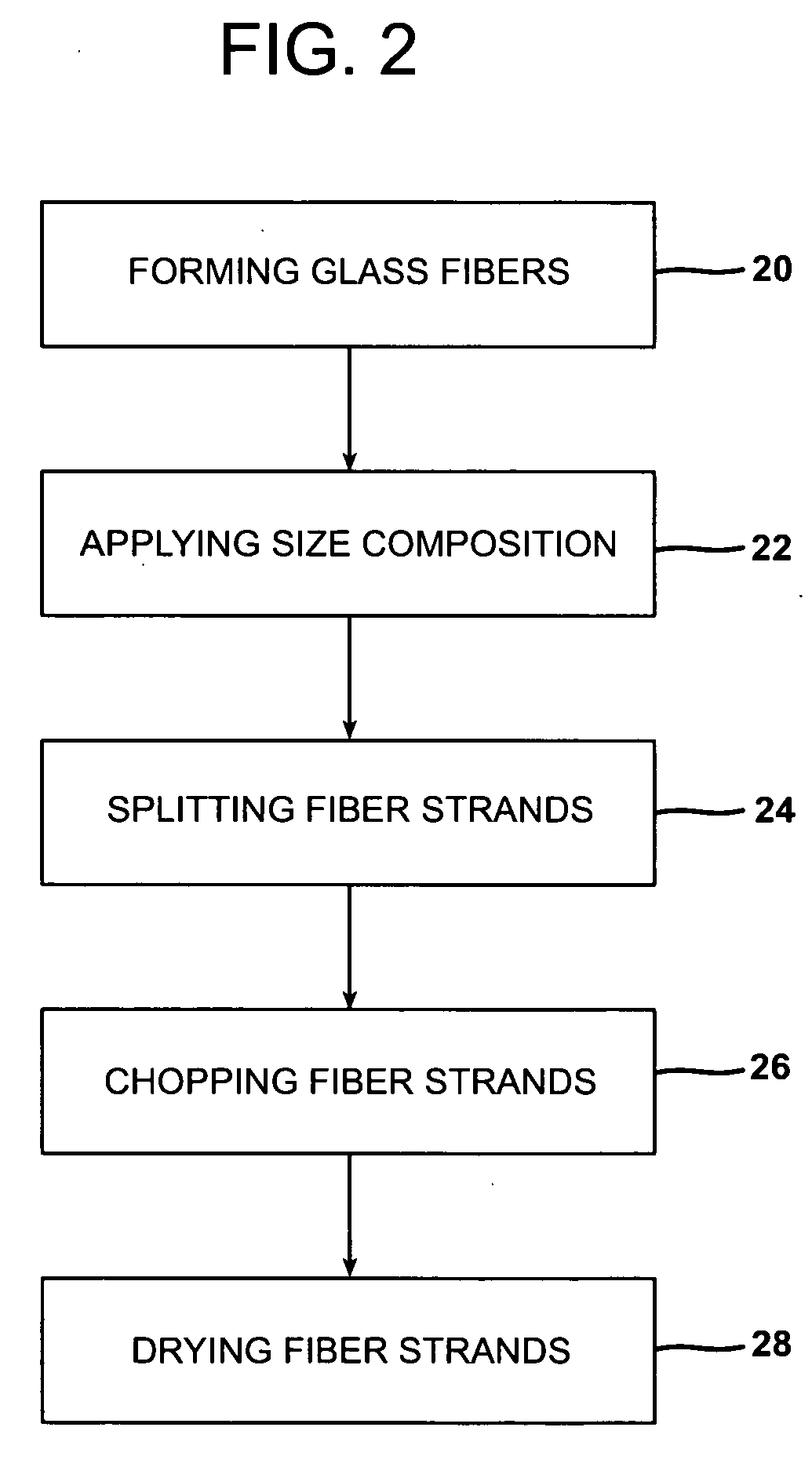Compression and injection molding applications utilizing glass fiber bundles
a technology of glass fiber bundles and injection molding, which is applied in the direction of drying machines with progressive movements, lighting and heating apparatus, furnaces, etc., can solve the problems of high manufacturing cost of wet chopped fiber bundles, and achieve the effect of increasing the speed at which glass fiber bundles can be produced, improving throughput, and speeding up the speed of speed
- Summary
- Abstract
- Description
- Claims
- Application Information
AI Technical Summary
Benefits of technology
Problems solved by technology
Method used
Image
Examples
example 1
Formation of Dry Chopped Glass Fiber Bundles
[0072] The sizing formulations set forth in Tables 1-4 were prepared in buckets as described generally below. To prepare the size compositions, approximately 90% of the water and, if present in the size composition, the acid(s) were added to a bucket. The silane coupling agent was added to the bucket and the mixture was agitated for a period of time to permit the silane to hydrolyze. After the hydrolyzation of the silane, the lubricant and film former were added to the mixture with agitation to form the size composition. The size composition was then diluted with the remaining water to achieve the target mix solids of approximately 4.5% mix solids.
TABLE 1Polyurethane Size Composition AComponent of Size% by Weight ofCompositionActive SolidsW290H(a)83.64A-187(b)1.12A-1100(c)4.68A-100(d)9.95Lubesize K-12(e)0.06
(a)polyurethane film forming dispersion (Cognis)
(b)epoxy curative (Resolution Performance Products)
(c)γ-aminopropyltriethoxysilan...
example 2
Formation of Dry Chopped Glass Fiber Bundles Utilizing a Heat Transfer Chamber
[0077] Each of the sizes set forth in Tables 1-4 were prepared and applied in a conventional manner to E-glass attenuated to 13 μm glass filaments in a 75 lb / hr throughput bushing fitted with 2052 hole tip plate. The sized fibers were split 16 ways to achieve 128 filaments per glass fiber bundle and passed through a heat transfer chamber where air heated by the extreme heat generated by the bushing was drawn into the heat transfer chamber to dry the glass fiber bundles. The dried glass fiber bundles had a bundle tex of about 43 g / km. The dried glass fiber bundles were gathered into one tow and chopped with a mechanical cot-cutter combination to a length of 1 ¼ inches. The chopped glass fibers were gathered into a plastic pan. The glass fibers contained 0% forming moisture.
example 3
Formation of Bulk Molding Compound Utilizing Various Sizing Compositions
[0078] One quarter inch (¼″) chopped glass fiber samples were made into bulk molding compounds with the formulation set forth in Table 5.
TABLE 5Bulk Molding Compound FormulationpphComponent(Parts Per Hundred)Polyester Resin E-342(a)60Thermoplastic P-713(b)40tBPB(c)1.5Calwhite II(d)200Zinc Stearate(e)4
(a)unsaturated polyester resin (AOC)
(b)thermoplastic (AOC)
(c)tert-butylperbenzoate catalyst
(e)mold release agent (Aldrich Chemical Co.)
[0079] The bulk molding compound formulation in Table 5 was prepared with various experimental glasses sized with the various sizing compositions at 20% by weight. The various experimental glass fibers are set forth below as Samples 1-10. The charge was placed into a 12 inch×18 inch tool and was molded at 10,000 psi at 265° F. for 5 minutes. The laminates were tested for resistance to notched impact strength according to ASTM D256 in the 0° and 90°...
PUM
| Property | Measurement | Unit |
|---|---|---|
| Percent by mass | aaaaa | aaaaa |
| Percent by mass | aaaaa | aaaaa |
| Percent by mass | aaaaa | aaaaa |
Abstract
Description
Claims
Application Information
 Login to View More
Login to View More - R&D
- Intellectual Property
- Life Sciences
- Materials
- Tech Scout
- Unparalleled Data Quality
- Higher Quality Content
- 60% Fewer Hallucinations
Browse by: Latest US Patents, China's latest patents, Technical Efficacy Thesaurus, Application Domain, Technology Topic, Popular Technical Reports.
© 2025 PatSnap. All rights reserved.Legal|Privacy policy|Modern Slavery Act Transparency Statement|Sitemap|About US| Contact US: help@patsnap.com



